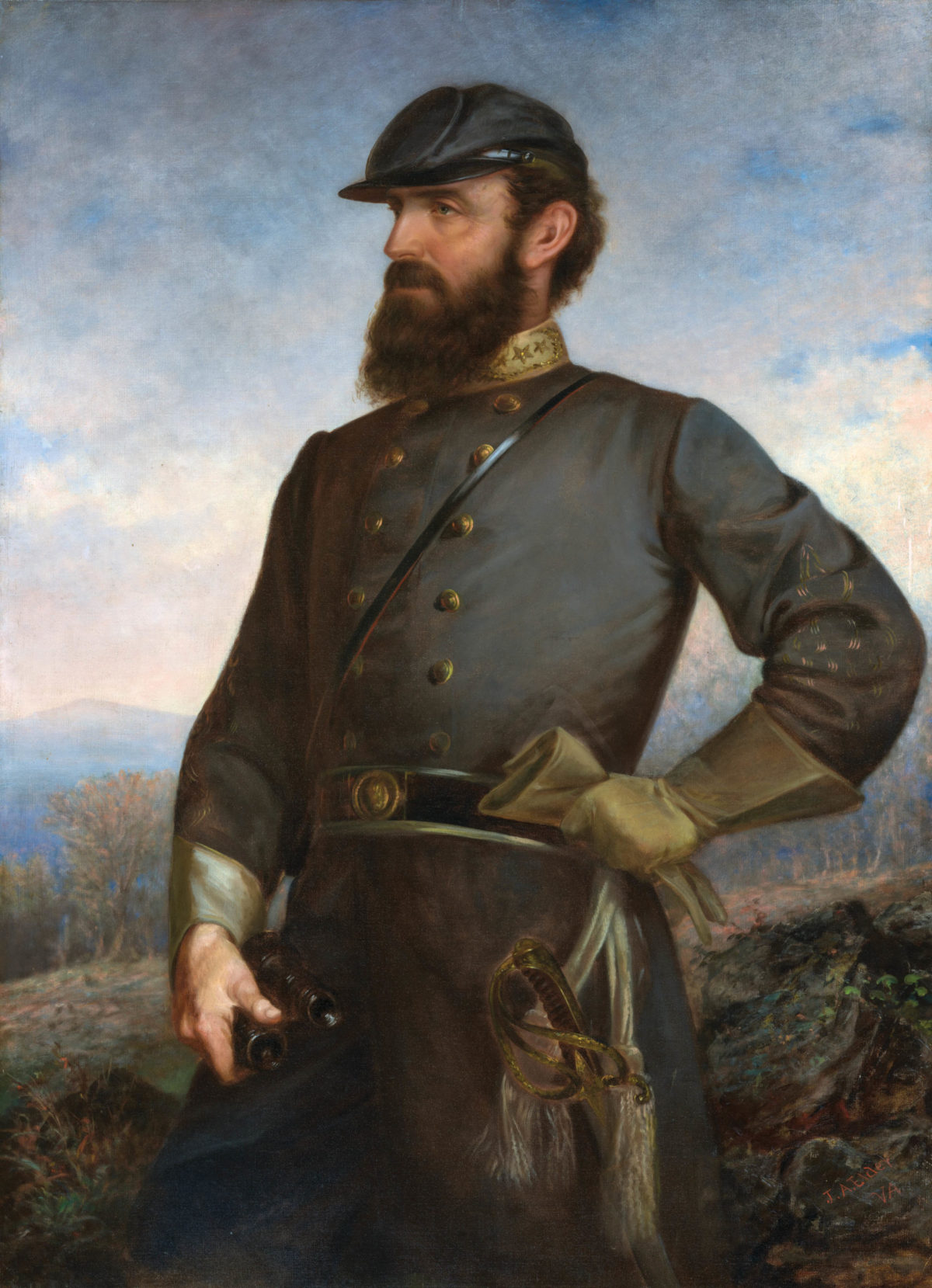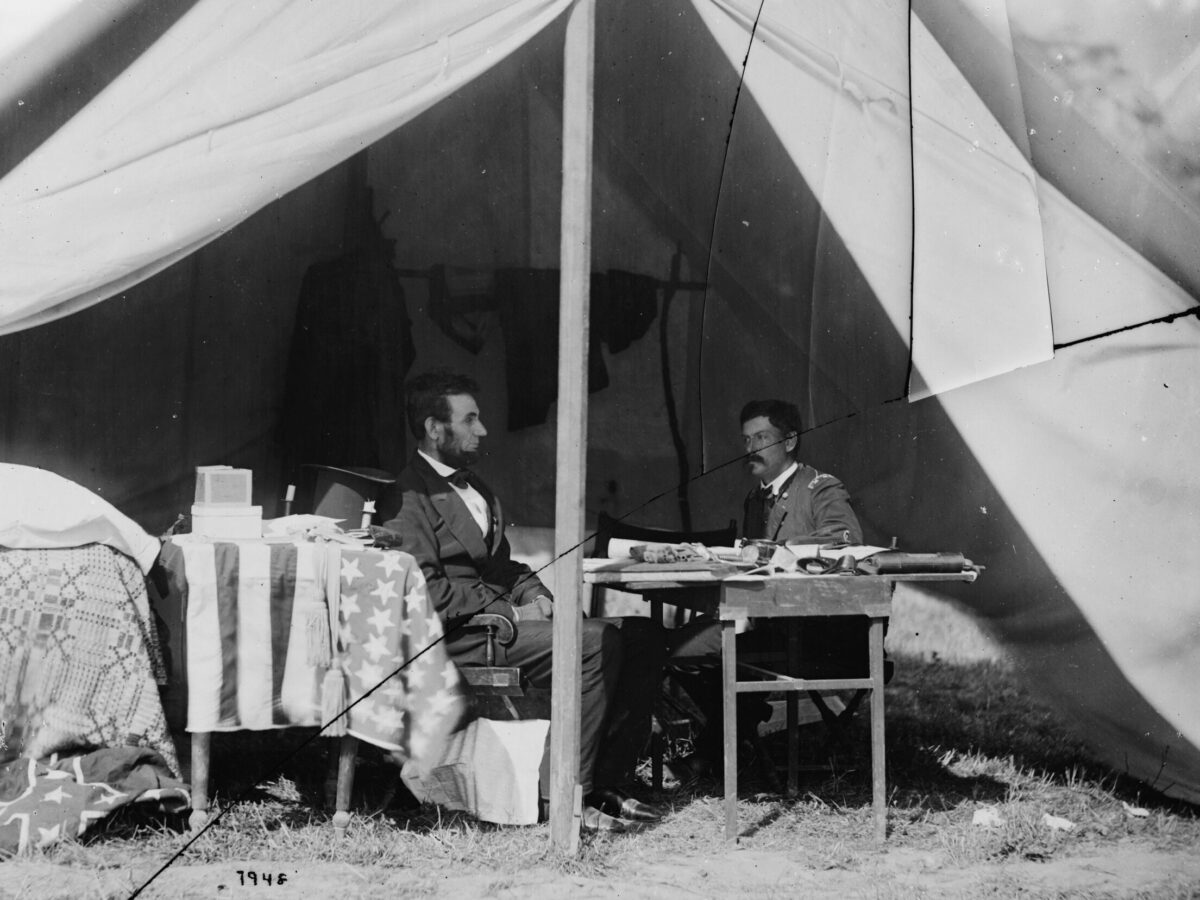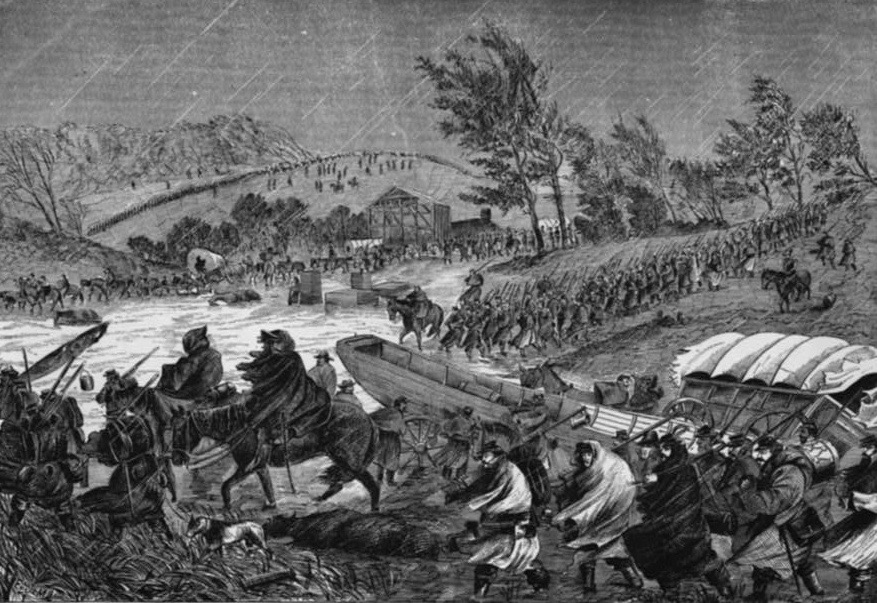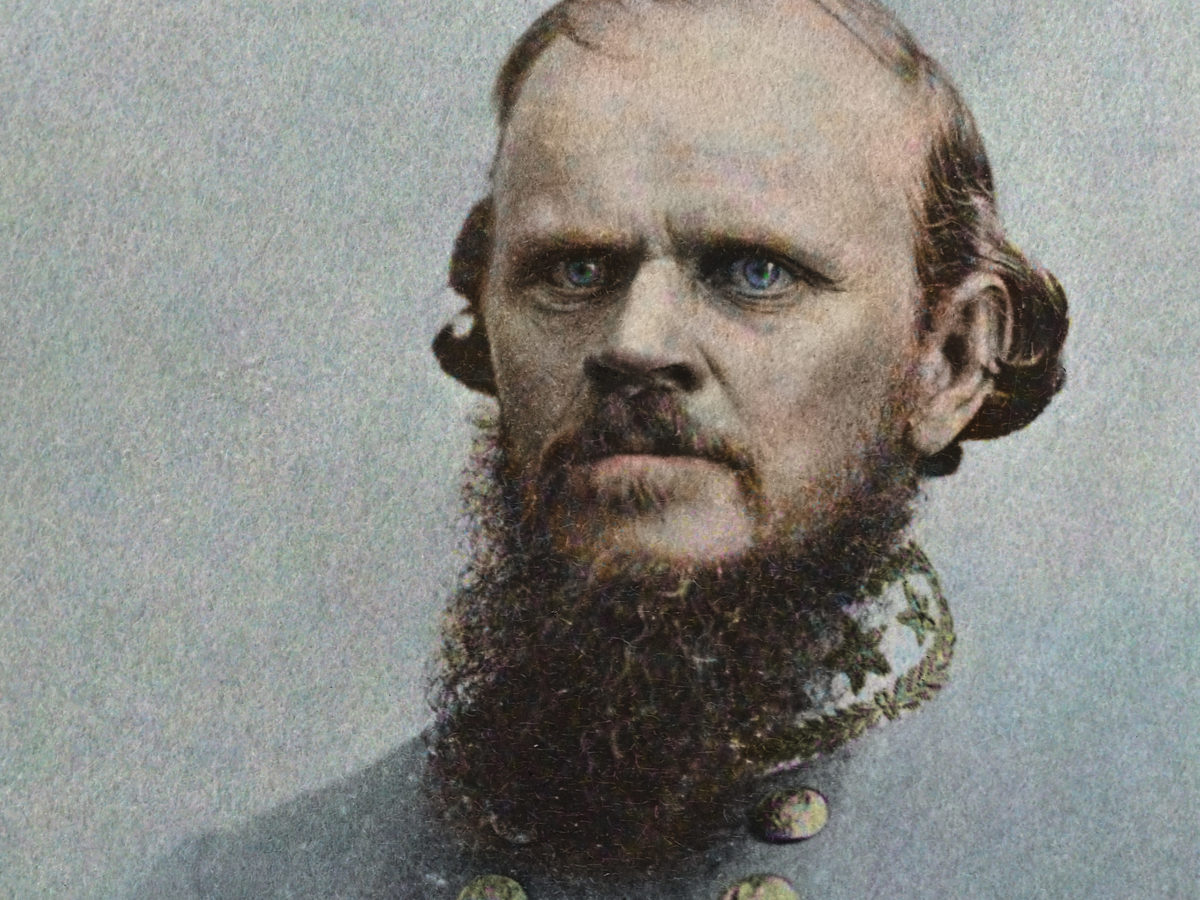Sunday, June 8, 1862 dawned bright and cool in Virginia’s beautiful Shenandoah Valley. Confederate Maj. Gen. Thomas J. “Stonewall” Jackson was in the central valley town of Port Republic, headquartered at Madison Hall, the residence of Dr. George W. Kemper.
The immediate area presented a busy scene. Behind the house was camped a brand-new untested unit, the Charlottesville Artillery. Beyond and across the adjacent road, farm fields were filled with the army’s herd of beef cattle and its massive 1,500-wagon baggage and ordnance train. Many of the wagons’ white “bonnets” (their tarpaulin covers), bore a large black-painted “U.S.”—proof positive of Jackson’s recent successes.
Sited atop a knoll on Port Republic’s southwestern edge, Kemper’s offered a splendid view of the picturesque inland harbor town tucked into the confluence of the North and South Rivers. Alongside the village’s southeastern edge, two fords offered access to the South River’s right bank.
Small detachments picketed both. Jackson’s Valley Army was encamped across the North River—by way of a covered bridge. The men looked forward to church services and more much-needed rest. Their plans for the day included bathing, fishing, and perhaps a sightseeing jaunt to nearby Weyer’s Cave.
Surprise!
At about 8:30 a.m. Jackson and most of his staff officers were gathered on Dr. Kemper’s porch, awaiting their horses. Suddenly a Southern rider, 16-year-old Henry D. Kerfoot, galloped up to Stonewall with horrific news.
“General!” he shouted while saluting, “Federals have charged across the lower ford of the South River…cavalry and artillery. They’re already in Port Republic!”
“Go back and fight them,” came Jackson’s calm response. With those words, firing erupted somewhere nearby.
An artillery shell exploded over the town. Anxious over this unexpected enemy activity, Jackson set off rapidly toward the combat, his staff officers streaming behind. Using long strides, he tramped to the head of the 400-yard-long Main Street and stopped. Usually quiet, the thoroughfare was now a blur of activity. Confederate horsemen—charged with defending one of the South River crossings—were fleeing in every direction. The Federal advance party was already on Main Street, shouting and firing.
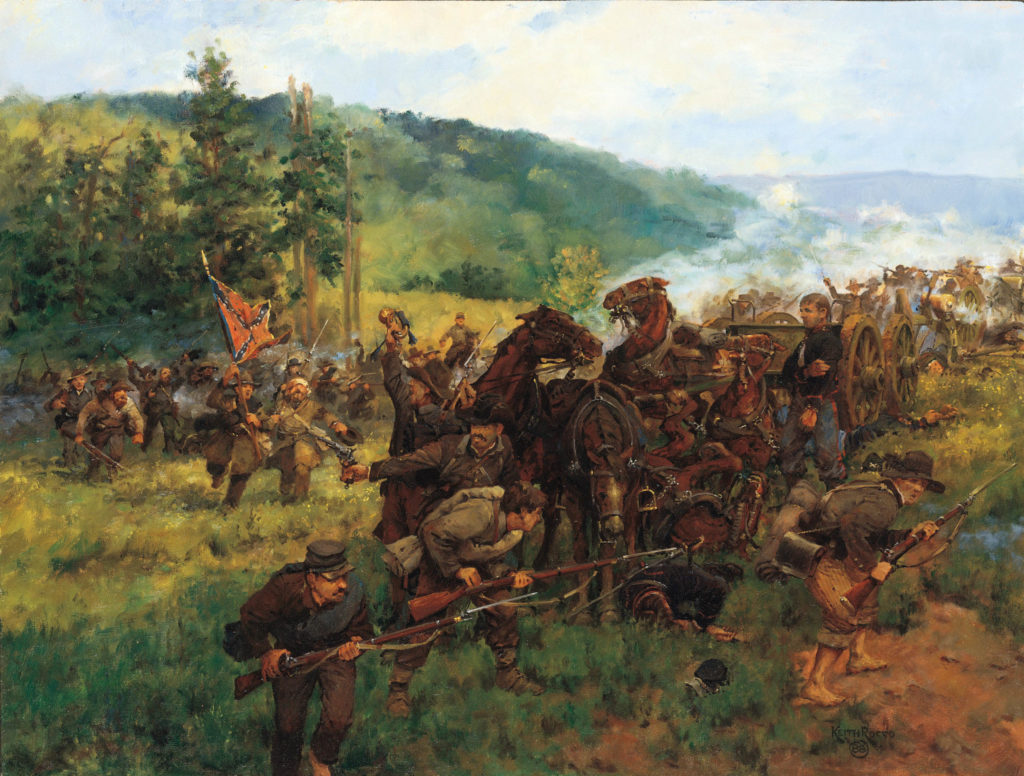
Jackson’s staff rushed to his side, their thoughts racing. Had the Federals seen Jackson? Would they rush him? Was this how the campaign would end, with Stonewall Jackson ingloriously gobbled-up by a platoon of blue-clad cavalry?
The aggressive Federal force that splashed across the lower ford into Port Republic—150 horseman and two pieces of artillery—posed several alarming threats. Once on Main Street and in possession of the North River Bridge, it completely separated Jackson from his army.
The capture of Stonewall himself—a cataclysmic possibility—would terminate the campaign and alter the course of the war. Yet another disastrous potentiality also loomed large: The capture of the army’s cattle herd and its entire wagon train, what kept the soldiers fed and fighting. That loss would also end the campaign, and perhaps even cause Jackson to give up the Shenandoah Valley.
A Rest Stop At Port Republic
In May 1862, during Stonewall Jackson’s Shenandoah Valley Campaign, his 16,000-man Valley Army, thanks to a series of lightning-fast marches and brilliant sucker punches, fought and won three battles—McDowell (on the 8th), Front Royal (on the 23rd), and Winchester (on the 25th)—in the process capturing hundreds of wagons and 2,300 prisoners. When Stonewall’s “foot cavalry” continued north “down” the valley threatening Harpers Ferry—and thereby threatening to cross the Potomac River—panic gripped several parts of the North. Late in the month, however, when Jackson learned that three Federal armies were converging on his position, he directed his force, captives and captures in tow, to move south, back “up” the Shenandoah via the Valley Turnpike.
Recommended for you
On June 7, Jackson established his headquarters at Dr. Kemper’s in the strategically important Port Republic. Stonewall’s two closest antagonists—Maj. Gen. John Charles Frémont with 12,000 men, and Brig. Gen. James Shields with another 5,000—were pursuing him up the Shenandoah Valley on either side of Massanutten Mountain (the fifty-mile-long-range dividing the valley in two). Frémont advanced along the main valley to the west of Massanutten, while Shields, with an aggressive force out front, felt his way southwestwardly in the Luray Valley to Massanutten’s east. From his position at Port Republic—beyond the southwestern face of Massanutten—Jackson could lash out at whichever enemy approached first.
But the Confederates who set up camp in and around Port Republic were utterly exhausted. They’d marched 350 miles in 30 days. “Our whole force is nearly broken down and needs rest,” wrote staff officer Sandie Pendleton. “I am sadly in need of it myself… Gen. Jackson is completely broken down.”
That explains why the positioning of Confederate forces on June 8 was so flawed. The Valley Army was across the North River from Stonewall Jackson’s headquarters, with only a minimal force in between, guarding the two South River fords. A troop of 2nd Virginia cavalrymen under Capt. J. J. Chipley lounged along the left bank at the lower ford while a twenty-four-man detachment from Company I, 2nd Virginia Infantry, under Capt. Samuel J. C. Moore was guarding the upper ford at the other end of Port Republic.
Jackson Makes A Run For It
Leading Gen. Shields’ advance force that morning was Col. Samuel Sprigg Carroll, an 1856 West Point graduate. His “flying column” included three companies of the 1st Virginia (Union) Cavalry, 150 horsemen, supported by Capt. Lucius N. Robinson’s Battery L, 1st Ohio Artillery, and two regiments of infantry: the 7th Indiana and the 1st Virginia (Union). Feeling aggressive, Carroll was pushing his men, as one wrote, “almost beyond the powers of endurance…”
After learning from scouts that Jackson’s wagon train was lightly defended, he posted two of Robinson’s cannon on a hill overlooking Port Republic and ordered them to open up. Leaving his infantrymen in their support, Col. Carroll rushed the lower ford with all of his cavalrymen and the other two Ohio artillery pieces. Chipley’s horsemen broke and ran.
Watching this scene from the other end of Main Street, Jackson was incredulous. In that harrowing instant, thick with dire consequences—as more enemy rounds exploded above the town—a servant appeared with Stonewall’s horse. He quickly mounted and, to the staff’s utter chagrin, galloped furiously toward the North River bridge and the enemy advance party. His staff officers followed suit.
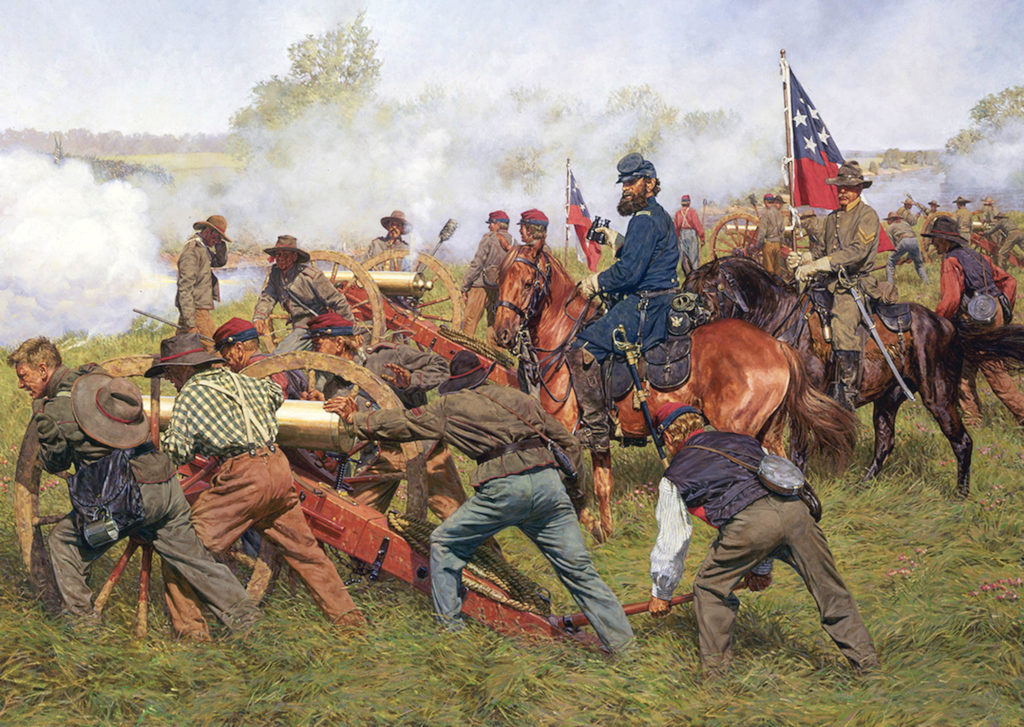
Riding past the church now serving as a hospital—where Dr. Hunter McGuire was swearing at his drivers to get the wounded loaded—Jackson shouted an admonishment.
As bullets whistled by, Stonewall and several of the staff, thundered through the covered bridge to the left bank and safety.
Luck was certainly smiling on “Old Jack” that morning. Some said Jackson’s old blue V.M.I. officer’s coat had something to do with his successful escape. One Confederate witness later claimed that the Northern cavalrymen, in their random and disjointed advance, “probably didn’t notice Jackson…”
A Stampede
“I was the last to get over [the bridge],” remembered Henry Kyd Douglas, “and I passed in front of Colonel S. Sprigg Carroll’s cavalry as they rode up out of the water… [T]hey greeted me with sundry pistol shots.” Others weren’t so fortunate. Three of the staff fell into the hands of the blue troopers: Dr. McGuire, Col. Stapleton Crutchfield, Jackson’s chief of artillery, and his assistant Lieut. Edward Willis. At gunpoint, Crutchfield was directed over to Col. Carroll. In disgust, the 26-year-old Confederate surrendered his sword. Carroll told him to remain mounted and placed him under the care of a single horseman nearby. Then the Federal colonel returned to the task of organizing his forces on Main Street.
Crutchfield grew extremely anxious when, just seconds later, a wide-eyed Northern cavalryman rode up shouting that the Confederate wagon trains were up ahead, just past the end of town. Carroll turned to Crutchfield and demanded to know if this was true. “You must find that out for yourself,” answered the artilleryman.When the Union colonel ordered one of his captains to immediately take a squadron in that direction, Crutchfield tried desperately to hide his apprehension. What a prize was but a few blocks away!
Meanwhile pandemonium reigned supreme at Dr. Kemper’s. Camp followers scurried every which way. Drovers herded the bellowing beef cattle away from town. Some of the Confederate waggoners were just now hitching up their equines. Amid the dust and confusion, others were whipping their wagon-teams into the road leading to Staunton. This movement, noted one witness, was close to a “general stampede.”
Holding Off the Enemy
In this moment of chaos, Capt. Sam Moore took decisive action. Tasked with protecting Port Republic’s upper ford, the one closest to Kemper’s, Moore had overnight learned the locations of headquarters, the green artillery unit encamped behind it, and the baggage and ordnance trains.He’d also discovered Madison Hall’s defensive possibilities. At the end of town, Main Street turned 90 degrees to the northwest and rose slightly for 150 yards before turning 90 degrees to the left into the Staunton Road. Sitting on a rise inside that last angle, Dr. Kemper’s generous yard was surrounded by a sturdy plank fence. To best overtake the fleeing wagons, a column of cavalry would have to turn right as it exited the village and pass along the fence, thus presenting its flank to fire.
Without hesitating, Moore sprinted his small force to Kemper’s yard and spread it out behind that plank fence. “My object,” he wrote years later, “was to defend the trains, and this seemed the best position for that purpose.” Moore’s soldiers didn’t have long to wait. When the Federal column-of-fours turned the corner and proceeded to parallel the fence unawares, Moore shouted, “Fire!”
Startled, unable to deploy—and minus a few riders—the Union squadron staggered back into Port Republic. Riding along with this force was Dr. Hunter McGuire, who, seeing his guard shot from the saddle, galloped into an alley and escaped. So far, so good. But Moore knew he needed help. Just before the enemy advance he’d sent a runner to the Charlottesville Artillery.
Organized only three months earlier, the Charlottesville Artillery had been recruited from the city and the nearby University of Virginia. Led by Capt. James McDowell Carrington—a nephew of Confederate Maj. Gen. John Buchanan Floyd, former U.S. secretary of war—the battery boasted 6 guns: two 3-inch ordnance rifles, two 6-pounder smoothbores, and two 12-pounder iron howitzers. The unit had first joined the Valley Army in late May, just as Stonewall Jackson was commencing his skedaddle back up the Shenandoah. Unofficially attached to the Louisiana Brigade commanded by Brig. Gen. Richard Taylor—son of former President Zachary Taylor—the unit nonetheless made the retreat to Port Republic among the army’s baggage and ammunition train.
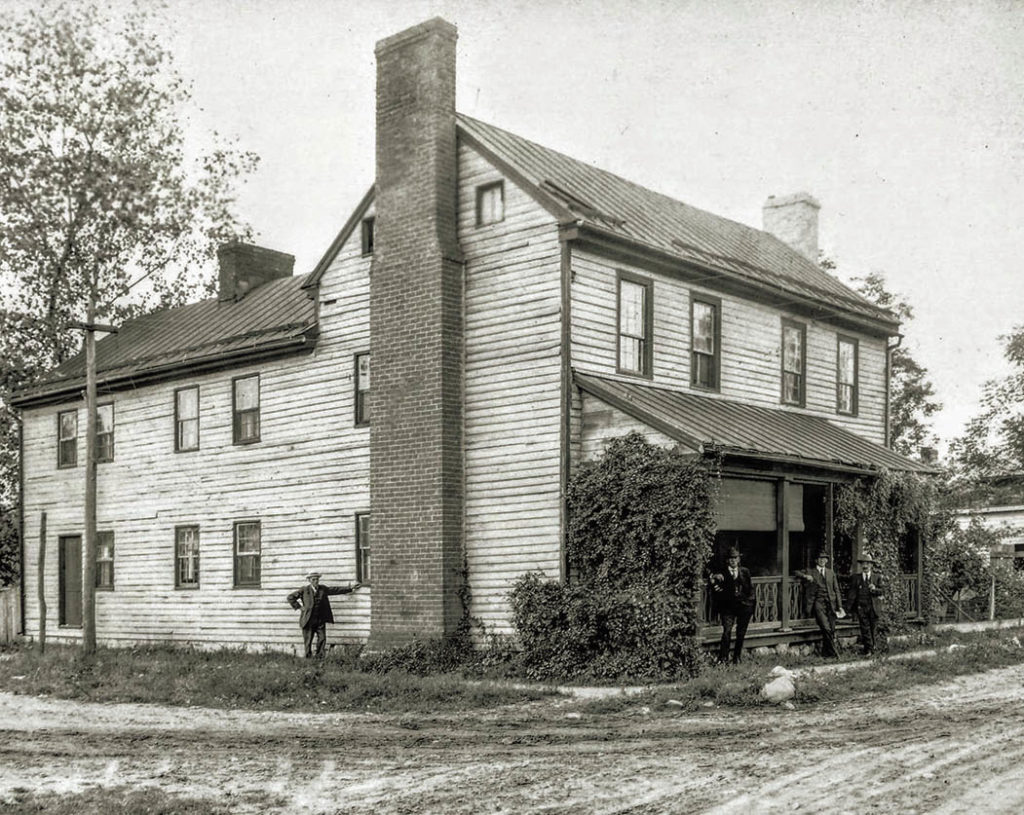
Camped behind Dr. Kemper’s, Capt. Carrington had already been warned twice about the enemy proximity—warnings he’d disregarded—but then received the notice from Moore. Another, simultaneous message he remembered explicitly. “Some Confederate officer, whose name I have never found out,” Carrington later recalled, “had the presence of mind to ride by me and [in] a loud voice halloo, ‘Bring up the artillery’…”At this Carrington ordered his bugler to sound the alarm. While five of the guns were limbered up, one 12-pounder howitzer was rolled by hand, wrote Carrington, “so as to command the road from the angle…”
As the Federal horsemen reorganized, another Charlottesville gun joined the defense. In the heat of the moment, Carrington had mistakenly ordered the balance of his command to the rear. But, as Pvt. Leroy Cox later remembered, he rushed up to 2nd Lieut. John H. Timberlake pleading, “For God’s sake, don’t let us run without firing a shot.” Looking “more a general than a lieutenant, his eyes lit up as only a gallant soldier’s will,” Timberlake drew his sword, then chased down one of the guns and ordered it onto the Kemper lawn. Just a few blocks away, Carroll was ready to launch another attack. As his men started at a trot toward Dr. Kemper’s, Col. Crutchfield “could only watch in mute misery.”
“Where On Earth Did Those Guns Come From?”
When the blue horsemen rounded the turn at the head of the street, however, they were greeted by brisk rifle fire. Bullets zipped overhead and underfoot. Some slammed into the buildings. The Northern cavalrymen recoiled and dashed back into the safety of the town. Riding among them, Carroll demanded that they halt and reform—he was not about to lose this opportunity. Carrington’s guns were now ready to fire—and he knew the enemy was about to return—but, fearing that Gen. Jackson had been captured and was in their midst, he hesitated to use canister.
Gazing across the Kemper yard, Carrington saw the cavalrymen coming at them again. “[T]he order was given by the Yankee Colonel to charge,” wrote Carrington, and so—hesitation be damned—he told his gunners to fire.With the Federal horsemen filling the sights, the Charlottesville boys worked their guns like demons. On one loaded piece, they neglected to properly elevate the barrel. Its discharge blasted through Dr. Kemper’s plank fence, sending slivers and shards pinwheeling toward the enemy.
This artillery fire again sent the Northerners scampering back into Port Republic’s alleyways, behind the houses and outbuildings. Still a captive, Crutchfield “straightened himself in his saddle.”He could scarcely believe his ears. “Where on earth did those guns come from?” he wondered. (It was an interesting question. As Jackson’s Valley Army’s chief of artillery, he was supposed to know where his batteries were posted.)
Now more Charlottesville guns joined the fray. With pistol drawn “to enforce his commands,” 1st Lieut. James L. Dinwiddie ordered his section unlimbered so as to fire directly down Main Street.It was an extremely sound decision. Ordered to open up, these two guns barked viciously, sweeping Main Street from end to end. Extremely frustrated, Carroll was unable to regroup his overawed cavalrymen.
The combat’s focal point now shifted to the North River bridge. First, Ohio artillery posted there entered the fight at Kemper’s. Pvt. Wilbur Davis remembered seeing “a puff of smoke from a cannon, and a shell crashing through a frame building just in our left front…” The Charlottesville gunners replied with canister.
Meanwhile, Gen. Jackson, on the ridge above the span, was urgently seeking assistance. Confederate Capt. William T. Poague of the Rockbridge Artillery recalled that he “never saw Jackson as much stirred up at any other time.”Yelling, “Have the guns hitched up, have the guns hitched up!” as he rode past Poague’s command, Stonewall galloped on toward the infantry camp. There, he ordered several regiments to clear Port Republic of the enemy.
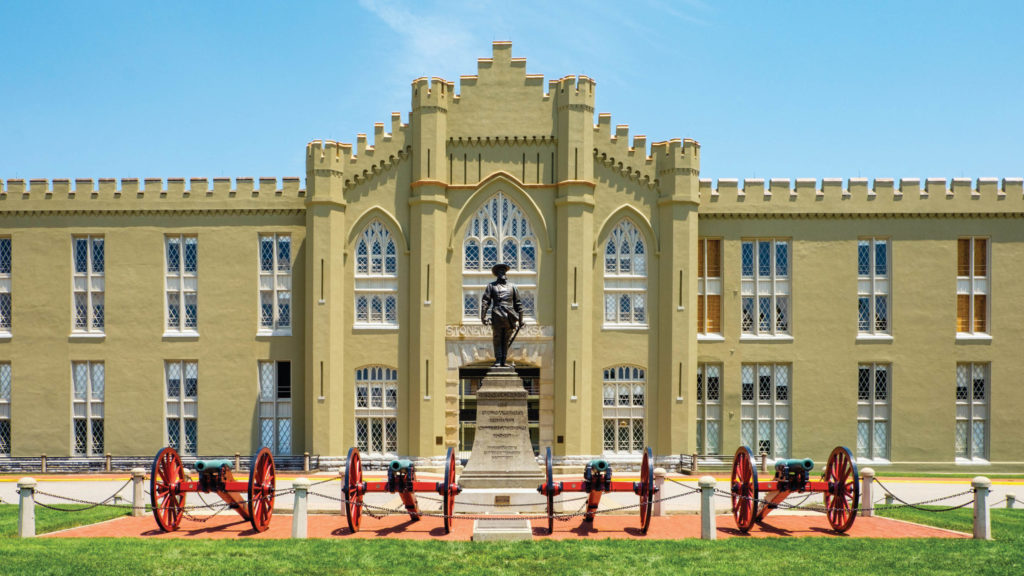
Riding back to the North River, Jackson overtook the Rockbridge Artillery and guided its first piece to a point directly above the covered bridge. As the crew unlimbered and loaded the gun, Stonewall spotted blue-uniformed artillerymen manning a piece at the bridge’s opposite end. Turning to the Rockbridge crew, Jackson gave them the command to fire.
When they protested, shouting that those men were Confederates, Stonewall loudly repeated his order. Riding up alongside Maj. Gen. Jackson, Capt. Poague stated that he knew they were Confederates. Then he explained that at headquarters, he’d seen a recently attached battery, Carrington’s, whose personnel wore uniforms similar to those men across the span.
Seemingly convinced, Jackson rode forward and shouted at the cannoneers across the river, “Bring that gun up here!”Not getting an acknowledgment, he yelled, “Bring that gun up here, I say!” At this, the blue-clad artillerymen fired a round that blasted into the bank below Jackson’s position. “Let ’em have it!” shouted the general as he turned to find the closest infantry unit. Poague’s gunners opened up but couldn’t depress their muzzles sufficiently to hit the mark.Brig. Gen. William B. Taliaferro’s lead regiment, the 37th Virginia Infantry, however, soon double-quicked to Jackson’s assistance.
Saving Stonewall’s Bacon
With Stonewall Jackson watching, the regiment unleashed a volley, then rushed down from the heights, charged through the covered bridge, and captured the Federal artillery. The 37th then pitched into Port Republic, drove Carroll’s cavalrymen across the upper ford, and, to the great relief of Jackson, finally secured Port Republic. In the confusion of those last few moments, Crutchfield and Willis evaded their captors and rode away free men.
It had been, to paraphrase what the Duke of Wellington once said, “a near run thing.” Jackson and his staff had barely escaped capture, and the army’s cattle herd and wagon trains had just as luckily eluded the enemy. Thankfully, the North River bridge remained intact. The credit—for “snatching victory from the jaws of defeat”—went to the men under Captains Moore and Carrington. One participant commented on “the gallantry of Capt. Moor’s [sic] company…” Historian Douglas Southall Freeman wrote that Carrington “had displayed rare judgment.” And, amazingly, the action had cost the Charlottesville Artillery only one man wounded. By contrast, the head of Main Street was littered with 14 dead Federal horses. No doubt, the battery’s close-range canister blasts had also wounded a number of Carroll’s troopers. Pvt. Leroy Cox noted with glee that after the fight, Gen. Jackson “came up and said when he saw where we had shot canister through the plank fence, ‘If it was a lot of green men, they seemed to know how to use canister.’”
Among Jackson’s battles during the Shenandoah Valley Campaign, those at Cross Keys and Port Republic stood out as decisive victories. Jackson’s tactical and operational genius in winning the March–June 1862 Valley Campaign forced Union forces to retreat, thereby permitting him and his army to rush unimpeded to reinforce Gen. Robert E. Lee’s defense of the Confederate capital, Richmond, against Union Army commander, Maj. Gen. George B. McClellan’s Peninsula Campaign (March–July 1862). Although Jackson’s subsequent battlefield performance achieved mixed results in that campaign’s decisive Seven Days Battles (June 25-July 1, 1862), it nevertheless contributed to Lee’s ultimate defeat of McClellan, saving Richmond.
For the men under the command of Moore and Carrington, however, there remained almost three years of grim war. But they’d always remember the morning of June 8, 1862—the morning they saved Stonewall’s bacon.

